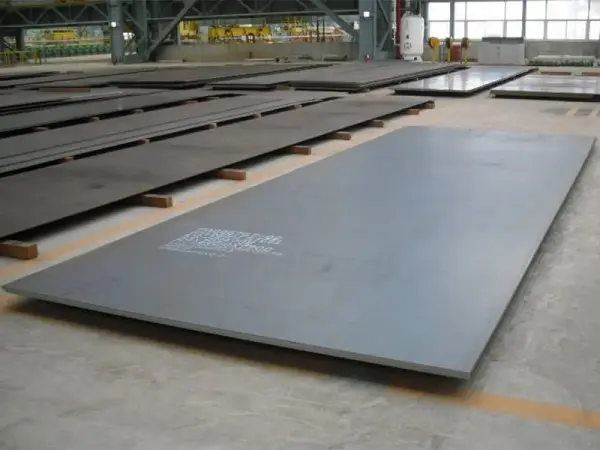- Phone0086 731 8564 8255
- E-mailsales@cscsteel-manufacturing.com
-

Fusion Bonded Epoxy (FBE) pipe coatings are thermosetting, powdered epoxy coatings applied to steel pipes to protect against corrosion in both underground and underwater environments. FBE coatings have been widely used for over 30 years in industries like oil and gas, water supply, and chemical processing due to their excellent adhesion, corrosion resistance, and mechanical strength.
Advantages of FBE Coating
Corrosion Resistance: FBE coatings offer superior protection against corrosion, making them ideal for use in environments where pipes are exposed to moisture, chemicals, or underground conditions.
Strong Adhesion: The epoxy coating bonds firmly to the steel surface, ensuring long-term protection.
Environmental Friendliness: The coating is free of solvents and hazardous materials, reducing pollution and providing an eco-friendly alternative to traditional coatings.
Durability: FBE coatings provide resistance to impact, abrasion, soil stress, and bending, making them durable in demanding environments.
High-Temperature Tolerance: FBE-coated pipes can handle temperatures ranging from -30°C to 100°C, making them suitable for various climates and operational conditions.
Types of FBE Coating
Single-Layer FBE Coating: This is the most common type, where a single layer of epoxy powder is applied to the surface of the steel pipe. It is typically used for onshore and offshore pipelines for water, gas, and oil transmission.
Dual-Layer FBE Coating: This process involves the application of two layers of epoxy powder, offering enhanced protection, especially in cases where higher mechanical strength is required.
Applications of FBE Coating
Oil and Gas Pipelines: FBE-coated pipes are frequently used in the transportation of crude oil, natural gas, and other petroleum products, both onshore and offshore.
Water Transmission: FBE coatings are applied to pipes used for transporting potable water, as they offer excellent corrosion resistance without contaminating the water.
Industrial Pipelines: In chemical and petrochemical plants, FBE-coated pipes provide resistance to corrosive substances and elevated temperatures.
Subsea Pipelines: FBE coatings help prevent corrosion and mechanical damage in underwater pipelines, ensuring longevity and reliability.
FBE Coating Process
The FBE coating process involves several key steps to ensure a high-quality, uniform coating:
Step 1: Surface Preparation
The steel pipe is cleaned using abrasive blasting to remove rust, scale, and other contaminants.
This is followed by preheating the pipe to around 180°C to 250°C, preparing it for the application of the epoxy powder.
Step 2: Epoxy Powder Application
The epoxy powder is applied to the preheated pipe surface using electrostatic spraying, ensuring uniform coverage. The powder melts upon contact with the hot steel surface, creating a fusion-bonded layer.
Step 3: Curing and Cooling
The coated pipe is allowed to cool, and the epoxy coating solidifies, forming a tough, protective layer. The coating adheres strongly to the steel, providing a smooth and continuous finish.
Step 4: Inspection and Quality Control
The coated pipe undergoes rigorous inspection to check for defects such as pinholes, thickness variations, and surface imperfections. Methods such as holiday detection and adhesion testing are commonly used.
Coating Thickness and Specifications
The typical thickness for a single-layer FBE coating ranges from 300 to 500μm. Specifications may vary depending on the pipe’s intended use, industry standards, and operating conditions. Key industry standards that govern FBE coatings include:
ISO 21809: Standard for the qualification and application of FBE coatings on steel pipes.
API RP 5L2: Recommended practice for the internal and external coating of pipelines used in the petroleum and natural gas industries.
ASTM A775/A775M: Standard specification for epoxy-coated steel reinforcing bars.
Limitations of FBE Coating
While FBE coatings provide robust protection in many environments, they have some limitations:
Mechanical Damage: FBE coatings are susceptible to mechanical damage during handling and installation, such as scratches or dents that can compromise the coating’s integrity.
Moisture and Heat Resistance: Although they offer good protection, FBE coatings are less resistant to moisture and high temperatures compared to some other coating systems.
Not Ideal for Aggressive Soil Conditions: In environments with highly aggressive soils or extreme weathering conditions, additional layers or other coatings (such as 3-layer PE/PP) may be required.
Conclusion
FBE pipe coatings are a reliable, environmentally friendly, and durable solution for protecting steel pipes from corrosion. Whether used in oil and gas pipelines, water systems, or industrial applications, FBE coatings provide a long-lasting protective barrier, ensuring the safety and efficiency of pipeline systems. Proper application, quality control, and adherence to industry standards are critical to achieving optimal results with FBE-coated pipes.




